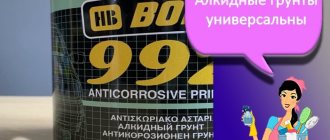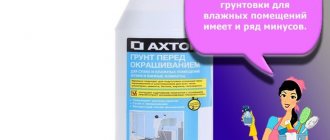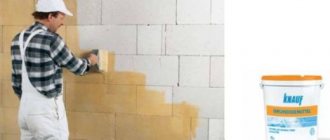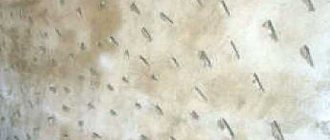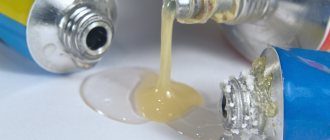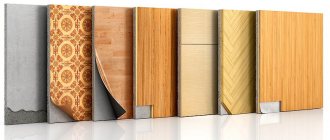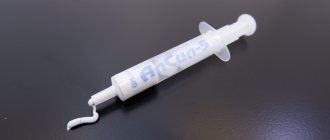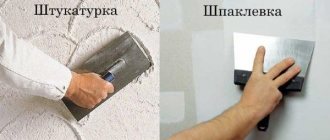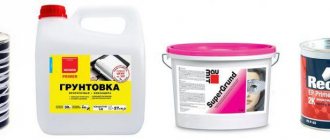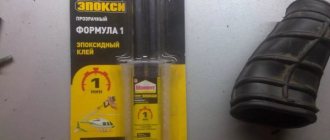Purpose of primer compositions
The need for a heat-resistant primer for metal is not obvious to everyone. Many people have the opinion that it is enough to paint or simply varnish newly manufactured metal structures.
Experience shows that the paint layer does not adhere well to the metal, despite the high consumption of funds, and quickly begins to peel and crumble.
Heat-resistant primer for metal performs several important functions:
- increases the adhesion of paints and varnishes during subsequent application;
- prevents the formation of oxide products;
- reduces paint consumption due to reduced absorption by the surface;
- forms a dense, durable protective layer that is resistant to thermal influences.
Applying primer impregnation will significantly save financial investments in giving a beautiful appearance to the heated metal and ensuring its preservation for a long time.
Heat-resistant primers: composition and properties
The soil is used to strengthen and remove dust from the base. With its help, it is possible to prepare the coating for the application of compositions of different densities and viscosities. Heat-resistant material is applied in the same way as regular material. Its main difference is its composition. Instead of conventional resins, adhesives and oils, the mixture includes polymers and acrylic, which are resistant to high temperatures.
Thanks to this composition, it is possible to prepare fireplaces, stoves, and barbecues for the application of decorative finishing products. Moreover, the use of high-temperature enamel allows you to achieve an even coating that does not have cracks or chips.
Using a primer helps save building materials. When working with fireplaces and stoves, it provides the required degree of adhesion for applying plaster or other substances. Without a binding component in the form of primer, cracks will appear on the surface of enamel, bricks or plaster over time.
Temperature standards
Heat-resistant soils have special compositions adapted to strictly defined conditions. When choosing a product, you need to have an accurate idea of the planned thermal load regime and take an interest in the manufacturers’ recommendations displayed on the labels.
Heat-resistant primer is available for use in the following temperature ranges:
- from room temperature to 60 °C;
- no more than 100 °C;
- up to 300 °C;
- more than 300 °C.
Products of the first group are used for water heating systems in apartments or houses; the second - for steam systems, fireplaces, external surfaces of stoves.
For powerful household heaters and industrial installations operated in harsh conditions, soils with higher fire-retardant properties are intended.
GF-031
The letter combination in the labeling clearly indicates that the product belongs to the glypthal group.
The description confirms the presence in the primer of this brand of glyphthalic resin with a solvent, pigment particles, antioxidant stabilizers, and substances with an active surface.
Metal products made of aluminum magnesium alloys and steels after applying the GF-031 coating can withstand heating up to 200 °C without any unpleasant consequences.
Before applying the GF heat-resistant primer to a metal structure, the suspension should be diluted with a solvent (solvent) to obtain a liquid with the required viscosity. With proper dilution and application, the layer thickness after the first coating will reach 20 microns, the second - 40 microns.
Plastering
When all the preparatory activities have been completed, the mixture is ready, you can begin finishing. Here are the step-by-step instructions:
The first stage is wetting the brickwork with warm water. This can be done with a large brush or an ordinary broom.
After moistening, the first layer is applied or, more precisely, sprayed. It helps to level the brick surface. The required thickness of the first layer is 3-5 millimeters. A fiberglass mesh, pre-cut into pieces, should be stretched over it. To keep the net in place, it should be pressed slightly into the wall.
The next layer is primer . It should be a few millimeters thicker than the first one. In this case, the evenness of the coating is fundamentally important. You also need to remember to moisten the layer, since moisture will evaporate very quickly from the warm stove surface.
Finally, the last layer is the cover . It is applied to a richly moistened primer layer. Thickness – 2-5 mm. It is important to remember that plaster is not intended to smooth out serious defects in masonry. After all, if the clay layer turns out to be too thick, it will simply crumble during the first fire. This means that the total thickness of the finishing layer should be no more than 1.5 centimeters. That is why it is important to ensure that the brickwork is initially level.
Phosphorus-based products
Soils containing a phosphorus component have half a century of experience in use and remain popular today. They contain a solution of orthophosphoric acid in alcohol mixed with pigments, resins and organic solvents.
Fire retardant primer based on phosphates, exhibits stability under thermal influences not exceeding 300 °C.
The heat-resistant product is intended for processing structures made of aluminum, titanium, magnesium alloys, and all types of steel.
The manufacturer assures that it is possible to apply the drug both to freshly manufactured parts and to products with a layer of corrosive products reaching 70 microns. However, despite the good fixation of the solution on the oxidized surface, it still makes sense to clean it first.
Phosphorus-containing primers can be easily polished and coated with any type of paint and varnish product. The composition has a wide range of applications; it can be used to process:
- building structures made of metals;
- roofs;
- hangars;
- pipelines;
- bridge spans and supports;
- overpasses;
- platforms.
Any metal product, after applying a heat-resistant layer of phosphate primer, can withstand both heating and the aggressive influence of the surrounding space.
For household and industrial metal products exposed to very high heat, a heat-resistant primer for ovens with the designation G-77, which can withstand temperatures up to 1200 °C, is ideal.
AU-1417 R
Alkyd-based varnish with a urethane component, including pigments, converters of rust products, is characterized by maximum ease of use; desiccant reagents that provide rapid drying and solvents.
The reagent does not belong to the category of classical primers because it immediately forms a final coating that does not require subsequent painting.
The product is available in a color palette corresponding to the international scale; can be used to protect all types of ferrous metal products. Its heat resistance is limited to +60°.
How to choose the right one
To make a successful purchase of a heat-resistant primer, you should prepare. It is necessary to find out the composition of the metal alloy that is planned to be processed; consider the maximum possible thermal loads during operation; compare allowable financial expenses with the cost of funds.
It is absolutely not necessary to use multifunctional compounds if the metal surface does not contain oxidized inclusions and the decorative qualities of the products will not be visible.
Situations are very likely when only metal fragments, for example a stove or fireplace, need to be primed, and then it is planned to do its full cladding.
In this case, heat-resistant properties are more important than decorative ones. It is always a good idea to discuss your intentions with competent representatives of the supplier company. The consultant’s opinion does not have to be decisive, but it is worth listening and taking it into account.
Why is it necessary to prime a surface that heats up during operation?
Heat resistant primer
for oven
And so, let's start from the beginning and try to figure out why it is generally necessary to prime a surface that will heat up during operation.
- To increase the level of adhesion of the base coat
As you already know, many primers have a high level of adhesion on their own. In addition, they also increase the level of adhesion of the surface they cover. Similarly, applying a primer that contains a surface converter to heating pipes will help transform a kind of chemical oxide film into a dissolution-resistant coating.
- To eliminate corrosion
Such solutions can be used not only as a base coat
, but also act as independent material.
- To reduce the number of absorbed properties, and ultimately to reduce the amount of paint consumed.
This characteristic is especially important for brick stoves, as well as fireplaces. The price of this material is much lower than a pigment of similar quality, making this surface treatment very worthwhile.
Is surface preparation necessary?
A wide variety of types of products are subject to treatment with a heat-resistant primer, some of which may have been manufactured on the eve of treatment, others have already been in storage for some time or even in use.
This should be taken into account when assessing the need for preliminary surface preparation. Newly made products do not need to be particularly cleaned.
Products from the warehouse may have been exposed to a humid environment, resulting in corrosion. Stored metal products become contaminated with particles of dust and other impurities. In any case, you need to carry out at least a rough cleaning, sweep away or remove all debris with an air stream.
It is useful to delve into the recommendations of the manufacturer of the heat-resistant primer. It is very likely that the metal will have to be cleaned with a rough brush or abrasive materials with large grains. A high-quality primer, when applied correctly, will provide reliable protection for the metal.
The brick oven is built on clay mortar. Will be painted with heat resistant paint. The clay mortar must be strengthened with a primer before grazing. A review of construction hypers did not reveal the presence of heat-resistant soils.
A search on the Internet gives several names, even the manufacturer of heat-resistant paint indicates its primer, but there is no way to go in and buy it.
Who treated stoves and fireplaces with what? In addition to strengthening the base, I also want the absence of discharge and odor on a hot stove.
Just acrylic primer and acrylic paint. Won't they fit? Your oven should not heat up more than 60 degrees. This is how acrylic holds such temperatures.
The threshold temperature limit for “spoilage” is one thing, but the presence of substances that begin to pass into the air as the temperature increases is another. We need a recommendation for a primer that, after drying, completely eliminates the emission of anything into the environment when the temperature rises.
If the paint contains/is based on organosilicon, then prime it with diluted liquid glass, IMHO. Or easier, make 1 layer with paint diluted by 10 percent.
Leon wrote: The temperature threshold for “spoilage” is one thing, but the presence of substances that begin to pass into the air as the temperature increases is another. We need a recommendation for a primer that, after drying, completely eliminates the emission of anything into the environment when the temperature rises.
There are two factors here: heating temperature and heat resistance of the coating. (the term heat resistance in this case is incorrect - the temperatures are not the same). So, after drying, the primer is in the state of a polymer film. “Everything” that can be inside is in a dried state. Volatile organic compounds (VOC) were released during drying and polymerization. There should be no smell left. When heated to a certain temperature, the polymer retains its properties and does not collapse. Nothing comes out of it, then the polymer begins to collapse, the transverse then longitudinal cross-links are destroyed (the film becomes soft), then cracking begins, then charring. For household primers, manufacturers do not indicate temperature limits for such destruction. Since it is understood that the operating temperature range for outdoor work is from minus 40 to plus 50 Celsius. If the material behaves well in this range, then there is nothing to worry about. Specialized materials designed for elevated temperatures contain in the description information on the temperature range of operation or simply the maximum temperature. Sometimes the operating temperature and temp are also given. short-term heating.
Secrets to keep your oven from cracking
Plastering a stove is only at first glance a simple, unsophisticated process that can be easily done with your own hands. In fact, to obtain a smooth, beautiful surface, you need to know some subtleties:
- You should not finish a newly built stove. The seams between the bricks must be properly dried, in addition, the structure must shrink. Therefore, before plastering, you need to heat the “bare” stove for several months.
- Another condition for an even coating without cracks is the correct proportions. The fatter the selected clay, the more plastic the mixture will be. This means that the more sand is required for it. If there is a lack of this material, the surface will certainly crack.
- It is equally important to follow the order of work. First prepare the solution, and only then start cleaning the surface. Otherwise, the prepared mixture will begin to harden, the water will evaporate, and the proportion will be disrupted. Therefore, it is preferable to first carry out all the preparatory measures, and then take on the plaster.
- The thickness of the first layer should be no more than 5 millimeters. To do this, the mixture should be made a little more liquid. The coating is done using the “throw” method: scoop up small portions of the solution and smash them on the surface.
- Further work can be started only after the first level has dried. The total thickness of the next layers of coating is 8-10 millimeters, and the composition itself is slightly thicker. To ensure a smooth surface, you can use special plumb lines.
- Sand the wet plaster with a rough cloth. It will help level the terrain and smooth out all microcracks.
- To slow down the evaporation of moisture and achieve more even drying, the oven is covered with wet bags. From time to time, the covering material is removed and the walls are sanded again.
- The stove can be heated after it has completely dried, when pressure with a finger does not leave any dents on the plaster. And whitening or painting should only be done after a month.
And a few more important notes:
- The paint used to cover the plaster must have a completely safe composition. Water-based coatings are best. If you neglect this rule, then when heated, substances harmful to health will be released into the air. This rule applies to all materials used for stove finishing.
- Another finishing option is whitewashing. A mixture of chalk and milk works well - it does not crack due to temperature changes and does not get dirty. It should be diluted in the following proportion: 1 part crushed chalk to 2 parts cow's milk.
- If you have doubts about your own finishing skills, it is better to entrust the matter to professionals. The desire to save money on craftsmen and do everything yourself can lead to expensive materials being damaged and having to pay twice.
We invite you to familiarize yourself with: Brick chimneys and chimneys
Temperature ranges
At what temperature is the use of special, heat-resistant primers required? Let's analyze the coating requirements at different operating temperatures.
Up to 60C
In particular, elements of autonomous heating systems fit into this temperature range. Their typical temperature difference between supply and return is 70/50C, which gives no more than +60C on the surface of the heating devices.
At temperatures from 0 to +60 you can safely use general purpose paints and primers. If the painting technology is followed (that is, if the surface is cleaned well and the primer matches the type of paint and varnish material), there is no need to worry about paint delamination or fading.
General purpose paints can be used in an autonomous heating circuit.
Up to 100C
The only significant difference from the previous scenario is the need to use paints with persistent pigments. The binder and primer remain the same as before: all popular types of paint can withstand prolonged heating without destruction.
Practical consequence: cheap and very common GF-021 is a completely suitable primer for radiators both in autonomous heating circuits and in central heating systems.
Up to 300C
And here comes the high point of heat-resistant soils. If the instructions for using a temperature-resistant coating indicate the need for priming, you will have to select special compounds that can withstand prolonged heating and retain their properties over the entire range of operating temperatures.
Over 300C
All paints intended for temperatures above +300 degrees are applied without prior priming, directly onto a cleaned and degreased surface. A layer of soil at such temperatures will only increase the likelihood of the coating peeling off.
Analysis of market offers
What are heat-resistant soils? Let's take a look at several offers on the modern market as examples.
GF-031
Alkyd heat-resistant primer is produced according to TU-2312-030-00206919-2002 and is a suspension of pigments, antioxidants and surfactants in glyphthalic varnish.
What can you tell about its properties and features?
- The primer is intended for steel, magnesium and aluminum surfaces. In particular, GF-031 is used in civil aviation - for applying coatings to aircraft bodies.
- The maximum operating temperature is +200C.
It’s interesting: the reservation about civil aircraft construction is not accidental. The outer skin of an interceptor fighter at a speed of about 2.5M (2.5 times faster than the speed of sound) due to friction with the air heats up to 300-500 degrees.
- Solvent - solvent; It is also used to dilute the soil when it thickens.
- Application method: spray or using a hand-held painting tool.
- The thickness of the single-layer coating after drying should be 15-20 microns. Primer consumption per layer is 60-80 g/m2.
- TU specifies the color of the pigments used. Produced according to technical specifications GF-031 - yellow.
Phosphosoil
The name is a trademark of the Moscow company KrasKo. As you might guess, we have the so-called phosphating primer.
It reacts with the base and forms a thin layer of insoluble phosphates that improve adhesion and prevent corrosion.
Chemical composition of the phosphating reagent.
- A mixture of acrylic, formaldehyde and epoxy resins is used as a binder. It is logical to assume that the primer is intended exclusively for open air or industrial conditions: formaldehyde in a residential area will clearly be unnecessary.
- Operating temperature range - up to +300 degrees.
- Thanks to its composition, the primer can be used with any type of heat-resistant and conventional paints. It can be used not only on metal: the manufacturer allows it to be used to improve the adhesion of the final coating on fiberglass or ceramics.
- The primer can be applied not only to a previously cleaned surface, but also to a rusty surface.
However: when applying a primer with your own hands, it is still worth first removing sheet and loose rust. The phosphating composition can change its chemical properties, but it will not change the spatial structure of the fragile oxide.
- Phosphosoil is diluted with acetone or toluene.
- Thanks to organic solvents, the composition can be applied at low temperatures down to -10C. Drying time for a single-layer coating at +20 is no more than 30 minutes.
- The average primer consumption is 70-90 grams per square meter.
The photo shows the packaging of Phosphogrunt.
This heat-resistant primer for stoves and fireplaces impresses with its heat resistance. Its stated operating temperature is 1200 degrees, which, you see, is very impressive compared to the previously described solutions. The composition of the water-dispersed primer is not disclosed by dealers; however, the colossal heat resistance suggests that the main binder in G-77 is heat-resistant silicone.
Applying primer has two purposes:
- Improving the adhesion of putties and plasters.
Useful: at high operating temperatures, you can forget about the usual gypsum and cement mixtures. A mixture of clay and sand is used to decorate stoves and fireplaces; Often, skim milk is added as a binder: the casein contained in it (milk protein, also known as low-fat cottage cheese) retains excellent binding properties even with temperature denaturation.
Plastering the stove with clay mortar.
- Strengthening the foundation . The resins contained in the soil penetrate its pores and bind the surface layer of the material into a single whole.
What other information about primer is available to a potential buyer?
- Application is quite traditional - with a roller or brush in two layers.
- Drying time for one layer is no more than an hour. At least two hours must pass before further finishing begins on the primed surface.
- Priming is performed at positive temperatures. Water based, remember?
- Consumption is no more than 400 milliliters of soil per square meter of surface.
Heat-resistant penetrating G-77 is supplied in plastic canisters of 1 kilogram.
What can surface priming achieve?
We use a heat-resistant primer mixture before finishing the stove with tiles
Application of a primer mixture as a base coat
for fireplaces and stoves pursues similar goals:
- to increase the level of adhesion of putty and plaster;
- to strengthen the base (the resins that are part of the substance penetrate deep into the pores and bind the final coating and the base into one).
Please note that at high operating temperatures you need to forget about using conventional gypsum or cement masses. To decorate the stoves, you need a mixture based on clay, sand, sometimes the bonding element is usually skim milk.
Yes, yes, you didn’t think so, exactly milk! Due to the presence of casein (milk protein), with high temperature denaturation, the solution will retain its excellent binding properties.
For any client, the manufacturer indicated the following information on the packaging:
- what option can be used to apply the substance to the surface (roller or brush);
- gave recommendations on the number of layers (best is no more than 2);
- indicated the time during which the coating can dry (no more than 60 minutes);
- gave an approximate soil consumption (less than 400 ml/m2).
Heat resistant silica tapes for high temperature insulation
Source: versace-promo.ru
